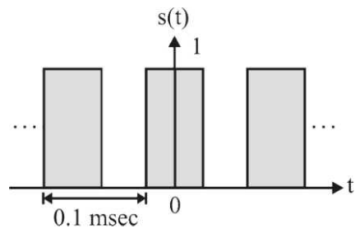11. The discrete equation y(n + 1) + 0.5ny(n) = 0.5x(n + 1) is not attributable to a
12. Which one of the following systems is a causal system?
13. The impulse response h[n] of a linear time-invariant system is given by h[n] = u[n + 3] + u[n - 2] - 2u[n - 7] where u[n] is the unit step sequence. The above system is
14. If z0 is a zero of a (real-valued) linear-phase FIR filter then following is/are also zero/zeros of a (real-valued) linear-phase FIR filter,
15. A non zero DC signal pass through a low pass filter then output is
16. It is possible to compute the cross-correlation Rxy(τ) between two signals x(t) and y(t) directly from their convolution provided
17. A discrete LTI system is non-causal if its impulse response is
18. The linear constant coefficient difference equation $$y\left( n \right) - \frac{1}{2}y\left( {n - 1} \right) = x\left( n \right) + \frac{1}{3}x\left( {n - 1} \right)$$ lead to
19. If the lower limit of Region of Convergence (ROC) is greater than the upper limit of ROC, the series $$X\left( z \right) = \sum\nolimits_{n = - \infty }^\infty {x\left( n \right){z^{ - n}}} $$
20. A rectangular pulse train s(t) as shown in the figure is convolved with the signal cos2(4π × 103t). The convolved signal will be a


Read More Section(Signal Processing)
Each Section contains maximum 100 MCQs question on Signal Processing. To get more questions visit other sections.
